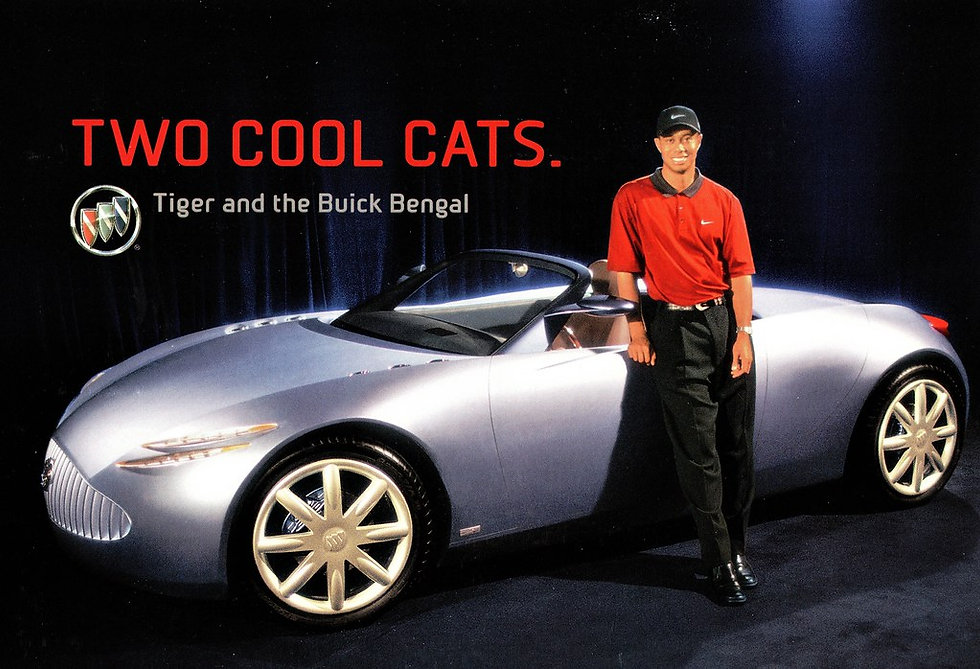2001 Buick Bengal Concept
- Story Cars

- Feb 18, 2024
- 2 min read
The Buick Bengal, unveiled in 2001, stands out as a sleekly sculptured roadster that defies the conventional design associated with Buick. This 2+2 sports coupe, incorporating an extra door on the driver's side for added accessibility, challenges expectations with its unique approach to both form and functionality.
At first glance, the Bengal captures attention with its unusual yet captivating design. Unlike the more traditional Buick vehicles, this sports coupe adopts a distinctive approach, integrating heritage styling cues such as portholes and a robust vertical-bar grille. The design team, led by Dave Lyon, sought to create a sports car that combines "sensual elegance with a variety of practical applications."
One of the notable features of the Bengal is its "wheels forward" architecture, where the designers pushed the front wheels as far as possible towards the nose of the car. This not only enhances the car's aesthetic appeal but also promises improved handling, showcasing a commitment to performance.
Under the hood, the Bengal houses a transversely mounted 250-hp supercharged 3.4-liter V-6 engine, coupled with a six-speed automatic transmission. This unique drivetrain configuration contributes to the overall handling dynamics of the roadster.
In terms of practicality, the Bengal offers a hidden compartment that can house jump seats or storage space for items like golf clubs. This versatility, combined with the 2+2 layout, adds a layer of functionality to the sports coupe.
Voice-activated controls, part of the Quiet Servant voice control system from Visteon corporation, add a touch of innovation to the Bengal's interior. This technology, previously featured in other Buick concepts, reflects a commitment to integrating cutting-edge features into the brand's vehicles.
AutoWeek magazine recognized the Bengal as the "best of the best" among concepts revealed at international auto shows in 2001, highlighting its impact on automotive design and innovation. The roadster's striking two-tone medium blue paint further underscores its distinctive character.
Named in honor of golf superstar and Buick spokesperson Tiger Woods, the Bengal concept aimed to appeal to a younger, wealthier demographic. With its blend of style, innovation, and performance, the Bengal showcased Buick's ability to push boundaries and explore new avenues in the automotive landscape.
Sources: www.welovebuicks.com, MOTOR Magazine - December 2000, January-February 2001
Images: General Motors Corp.

































Comments